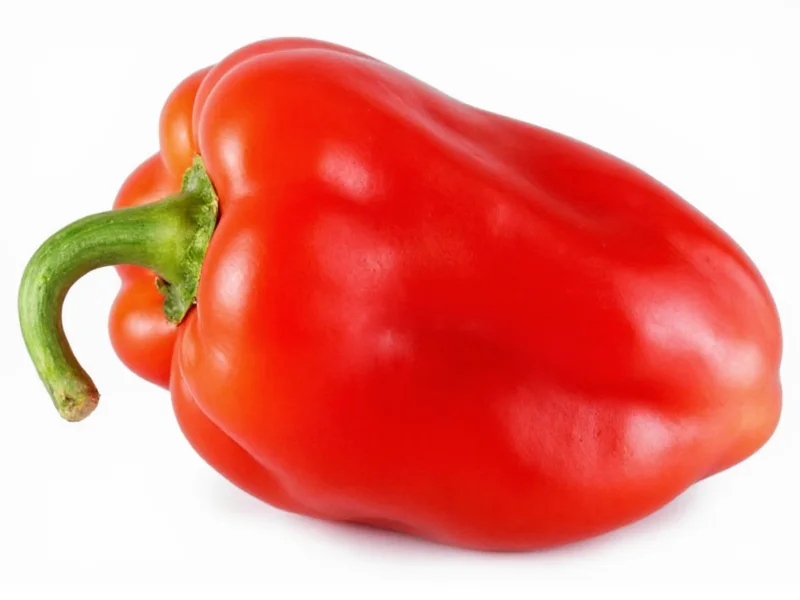Many home cooks search for ‘Romano pepper substitute’ unaware that ‘Romano’ actually refers to Pecorino Romano cheese – not a pepper variety. This common culinary confusion stems from Italian recipes mentioning ‘peperoncino’ (chili peppers) alongside Romano cheese. When recipes call for ‘pepper’ in Italian cooking contexts, they’re almost always referring to dried red pepper flakes.
Understanding the Flavor Profile
Authentic Italian red pepper flakes (peperoncino) deliver moderate heat (30,000-50,000 Scoville units) with fruity, slightly smoky notes. Unlike cayenne’s sharp burn, quality pepper flakes provide balanced warmth that enhances rather than overwhelms dishes. This distinction is crucial when selecting substitutes for spicy Italian dish alternatives or authentic red pepper replacement.
Top Substitutes Ranked by Culinary Accuracy
| Substitute | Ratio | Best For | Flavor Notes |
|---|---|---|---|
| Crushed red pepper flakes | 1:1 | All Italian dishes | Fruity, moderate heat |
| Aleppo pepper | 1:1 | Pasta, pizza, sauces | Tangy, moderate heat |
| Cayenne pepper | 1:2 | Hearty stews, meat dishes | Sharp, intense heat |
| Smoked paprika + cayenne | 1.5 tsp paprika + 1/4 tsp cayenne | Rustic dishes, braises | Earthy, complex warmth |
| Calabrian chili paste | 1:1.5 | Seafood, tomato sauces | Briny, fermented depth |
When to Avoid Common ‘Substitutes’
Many online sources mistakenly suggest black pepper or bell peppers as alternatives, but these fundamentally alter dish chemistry. Black pepper provides piperine heat (chemically distinct from capsaicin), while bell peppers lack capsaicin entirely. These represent poor choices for traditional Italian recipe adaptation where heat balance is critical.
Professional Chef Techniques
Top Italian chefs employ these substitution strategies:
- Bloom spices – Heat substitutes in olive oil for 30 seconds before adding to dishes to maximize flavor release
- Layer heat – Use milder substitutes early in cooking, reserve stronger options for finishing
- Balance acidity – Counter excessive heat with 1/4 tsp lemon juice or vinegar per serving
Regional Variations Matter
Italian pepper preferences vary significantly by region. Northern dishes often use milder peperoncino di Senise, while Calabrian recipes feature intensely hot peperoncino diacido. When substituting for regional Italian cuisine replication, match the heat profile to the dish’s origin. For example, use Aleppo pepper for Roman pasta dishes but Calabrian chili for southern Italian seafood.
Storage Tips for Maximum Freshness
Proper storage preserves substitute effectiveness. Keep red pepper alternatives in airtight containers away from light and heat. Whole dried chilies maintain potency for 12-18 months, while pre-crushed options degrade within 6 months. For long-term spice preservation, freeze crushed substitutes in ice cube trays with olive oil for ready-to-use portions.
Common Substitution Mistakes
Cooks frequently err by:
- Using equal amounts of cayenne (too hot)
- Adding substitutes too late in cooking (underdeveloped flavor)
- Ignoring dish acidity (tomato-based sauces require less heat)
- Confusing Romano cheese measurements with pepper quantities
Remember: authentic Italian cooking balances heat with other flavors, never letting spice dominate. This principle guides effective Italian recipe spice adjustment regardless of substitute used.
Can I use black pepper instead of red pepper flakes in Italian dishes?
No, black pepper creates fundamentally different chemistry. While both provide heat, black pepper’s piperine compounds don’t blend with Italian flavors like capsaicin-based red pepper flakes. Use smoked paprika with a pinch of cayenne for closer approximation.
What’s the best mild substitute for red pepper flakes?
Aleppo pepper provides similar fruitiness with half the heat. For extremely mild options, use sweet paprika blended with a tiny pinch of cayenne (1/16 teaspoon per teaspoon of paprika) to maintain authentic flavor balance without overwhelming spice.
How do I adjust recipes calling for ‘Romano pepper’?
First confirm whether the recipe means Pecorino Romano cheese or red pepper flakes. Check ingredient context: if listed with cheese measurements (ounces/cups), it’s cheese; if with spice measurements (teaspoons), it’s pepper flakes. Most ‘Romano pepper’ references are actually pepper flakes.
Does the quality of red pepper flakes really matter?
Significantly. Premium flakes contain both seeds and pod fragments for balanced heat, while cheap versions are mostly seeds (excessive heat) or pods (weak flavor). Look for coarsely ground flakes with visible red and brown speckles – this indicates proper processing for authentic Italian cooking spice quality.
Frequently Asked Questions
- Can I use black pepper instead of red pepper flakes in Italian dishes?
No, black pepper creates fundamentally different chemistry. While both provide heat, black pepper’s piperine compounds don’t blend with Italian flavors like capsaicin-based red pepper flakes. Use smoked paprika with a pinch of cayenne for closer approximation. - What’s the best mild substitute for red pepper flakes?
Aleppo pepper provides similar fruitiness with half the heat. For extremely mild options, use sweet paprika blended with a tiny pinch of cayenne (1/16 teaspoon per teaspoon of paprika) to maintain authentic flavor balance without overwhelming spice. - How do I adjust recipes calling for ‘Romano pepper’?
First confirm whether the recipe means Pecorino Romano cheese or red pepper flakes. Check ingredient context: if listed with cheese measurements (ounces/cups), it’s cheese; if with spice measurements (teaspoons), it’s pepper flakes. Most ‘Romano pepper’ references are actually pepper flakes. - Does the quality of red pepper flakes really matter?
Significantly. Premium flakes contain both seeds and pod fragments for balanced heat, while cheap versions are mostly seeds (excessive heat) or pods (weak flavor). Look for coarsely ground flakes with visible red and brown speckles – this indicates proper processing for authentic Italian cooking spice quality.











 浙公网安备
33010002000092号
浙公网安备
33010002000092号 浙B2-20120091-4
浙B2-20120091-4